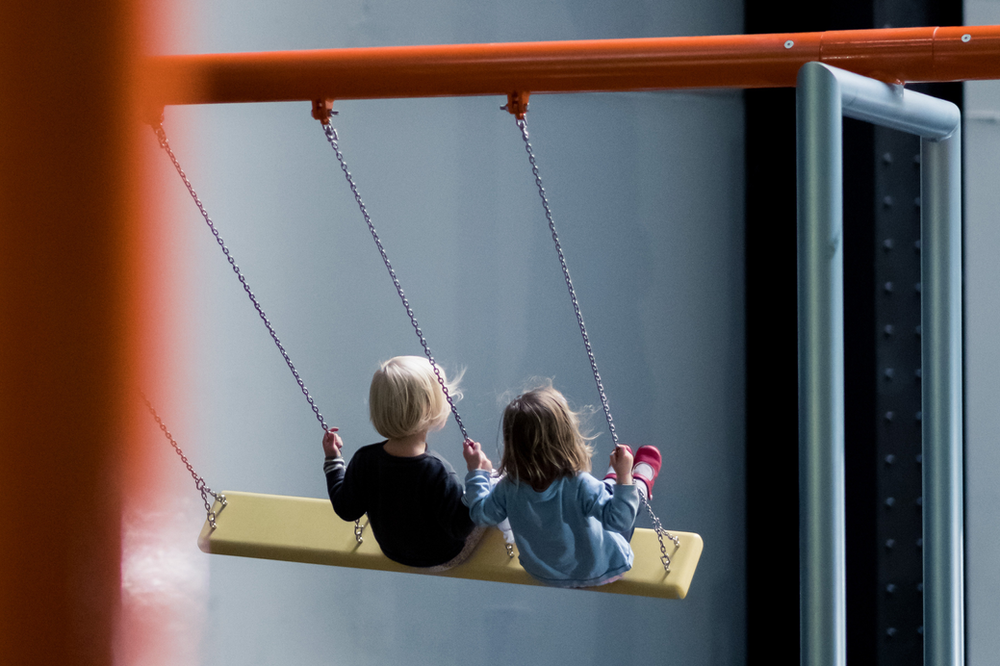
Montessori and the teachers who follow her method draw some unusual conclusions about the nature of childhood, sufficiently distinct from the traditional ways in which we think about children that we’re sure to write them down and print them in our brochures. We believe children are inherently good. We believe they are intrinsically peaceful. We believe that they want to contribute to their communities in meaningful ways. And we believe that, when they behave in ways that do not reflect these natural states, it is because, as adults, we have created an obstacle that it is our responsibility to remove.
And these beliefs, these core qualities of children around which our entire method is based, lead us to another, less often acknowledged conclusion: that children have rich, deep and complicated spiritual lives, even if we can’t see them.
Most spaces designed for children presume that children don’t want to pay attention to one thing for long, that they are impulsive and wiggly, attracted to garish colors, bells and whistles, that they prefer the company of invented characters to real people. We offer children fantastic stories, complete with talking animals and all the merchandise to go with them, and we mistake children’s credulity for wonder. But these diversions are merely diversions. They distract children and make them laugh and fill up some of the same space as wonder, but they’re not real wonder. They’re not touching the child’s soul.
Here, Montessori describes to us when she first saw evidence of the children’s spirits, complicated and rich and deep. Not at a festival or during a puppet show. Not while watching a performing clown or singing outrageously goofy jingles. But during silence. The children’s spirits were most visible in stillness.
Montessori’s conclusions about the spirit of childhood, spread across multiple texts and developed over decades, come down to this simple conclusion: their spirits are just as important to them as ours are to us.
Let me be clear: I’m not talking about God or religion or faith. I’m talking about the part of us, of each of us, that calls out in hunger to be known, to feel as though our actions hold purpose, to be assured that we matter to something larger than ourselves. When, as teachers, we feel our spirits depleted, it is when we are overextended, when we can’t see the influence of our work, when we feel like maybe we’re not doing it right or someone else would be better at it than we are or we are fungible. You can work twenty hours a day at work that you love, where you feel like your work matters and you are known, you can come crashing into bed at night exhausted and spent and, if your spirit is served by the work, be ready to go right back to it the next day. But if you feel like your work is not valuable, like you’re not in community, like your work doesn’t matter, and even the shortest day will feel like it’s endless. We want to know that we are known, that our work holds purpose, and that we are a part of something larger than ourselves.
So do the children.
And so, of course, the space in which we can be see the evidence of their spirits is in silence. Even the smallest child in the classroom knows, in that moment, that if they make a sound, it will affect the whole classroom. What better concrete experience of their inter-reliance than a “game” in which every single child must choose the good of the group over their own voice. The child who jokes and plays during silence, calling the attention of other children, seeks attention and disruption, a short-term substitution for purpose and connection. But the child who chooses to be quiet, even when it’s very hard to do, is choosing to action with immediate purpose, with impact to the larger community, and experiences, as a result, the satisfaction of their spirit.
What a happy accident. In the Silence Game, Montessori inadvertently stumbles on what may be the most perfect work: the one that is both powerful to the individual and critical to the society of children, that requires both self-awareness and empathy, that elevates the child’s individual choice to one that creates a profound connection among all the children, that does so both concretely and voluntary, and that pulls back the curtain for the observant adult on the spirit of the child.
We want to know that we are known, that our work holds purpose, and that we are a part of something larger than ourselves.
So do the children, and their spirits are just as important to them as ours are to us. Step gently.
* A response to Chapter 8: Visual and Auditory Distinctions The Discovery of the Child. M. Montessori
